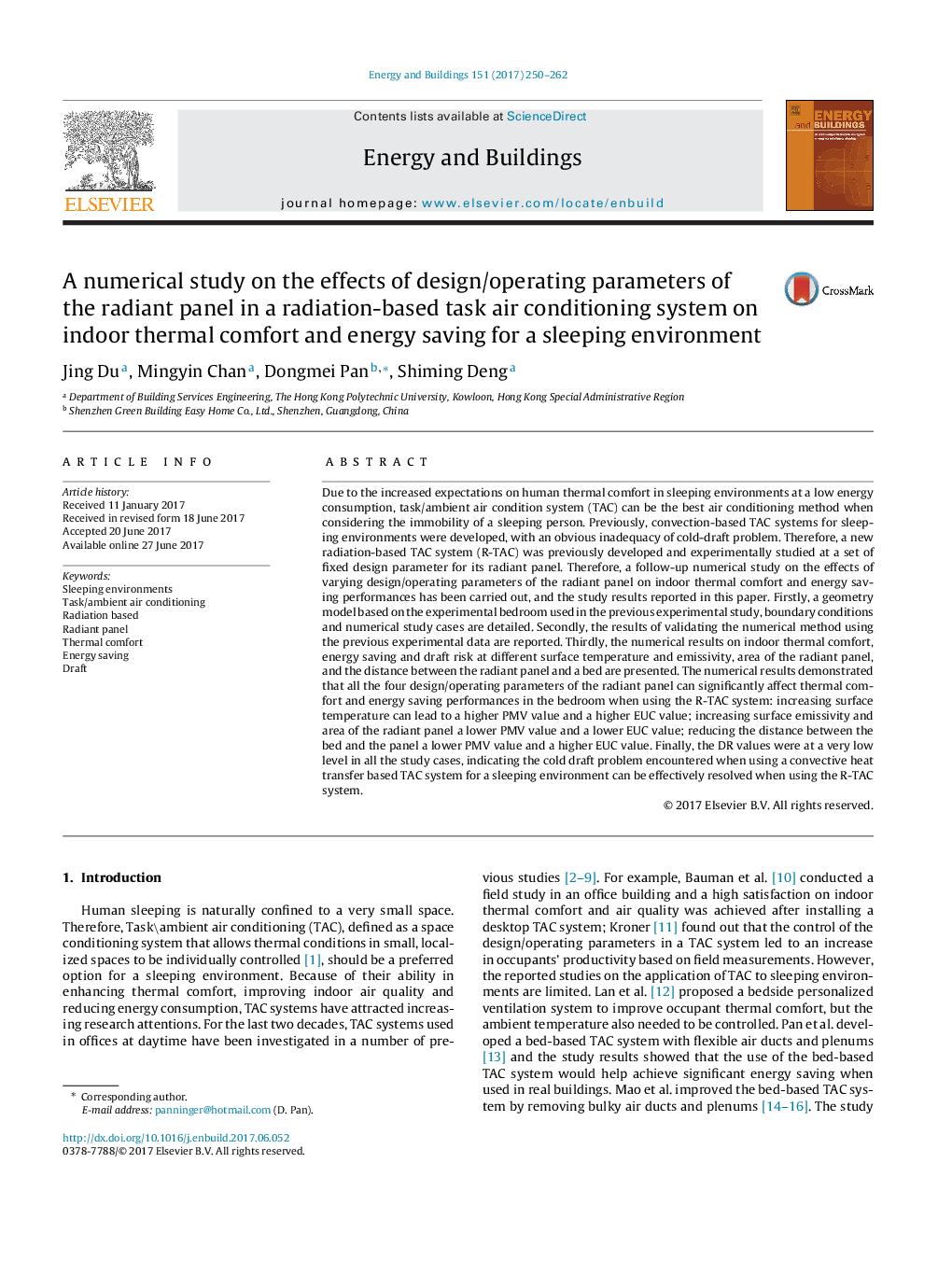| کد مقاله | کد نشریه | سال انتشار | مقاله انگلیسی | نسخه تمام متن |
|---|---|---|---|---|
| 6481079 | 1428939 | 2017 | 13 صفحه PDF | دانلود رایگان |
- A radiation-based TAC system for sleeping environments is numerically studied.
- The effects of design/operating parameters on PMV and EUC numerically is investigated.
- For the large panel, the optimum case achieved at Case L1.3.
- For the small panel, the optimum case achieved at Case S1.2.
- The draft risk in the occupied zone is always kept at a very low level.
Due to the increased expectations on human thermal comfort in sleeping environments at a low energy consumption, task/ambient air condition system (TAC) can be the best air conditioning method when considering the immobility of a sleeping person. Previously, convection-based TAC systems for sleeping environments were developed, with an obvious inadequacy of cold-draft problem. Therefore, a new radiation-based TAC system (R-TAC) was previously developed and experimentally studied at a set of fixed design parameter for its radiant panel. Therefore, a follow-up numerical study on the effects of varying design/operating parameters of the radiant panel on indoor thermal comfort and energy saving performances has been carried out, and the study results reported in this paper. Firstly, a geometry model based on the experimental bedroom used in the previous experimental study, boundary conditions and numerical study cases are detailed. Secondly, the results of validating the numerical method using the previous experimental data are reported. Thirdly, the numerical results on indoor thermal comfort, energy saving and draft risk at different surface temperature and emissivity, area of the radiant panel, and the distance between the radiant panel and a bed are presented. The numerical results demonstrated that all the four design/operating parameters of the radiant panel can significantly affect thermal comfort and energy saving performances in the bedroom when using the R-TAC system: increasing surface temperature can lead to a higher PMV value and a higher EUC value; increasing surface emissivity and area of the radiant panel a lower PMV value and a lower EUC value; reducing the distance between the bed and the panel a lower PMV value and a higher EUC value. Finally, the DR values were at a very low level in all the study cases, indicating the cold draft problem encountered when using a convective heat transfer based TAC system for a sleeping environment can be effectively resolved when using the R-TAC system.
Journal: Energy and Buildings - Volume 151, 15 September 2017, Pages 250-262
